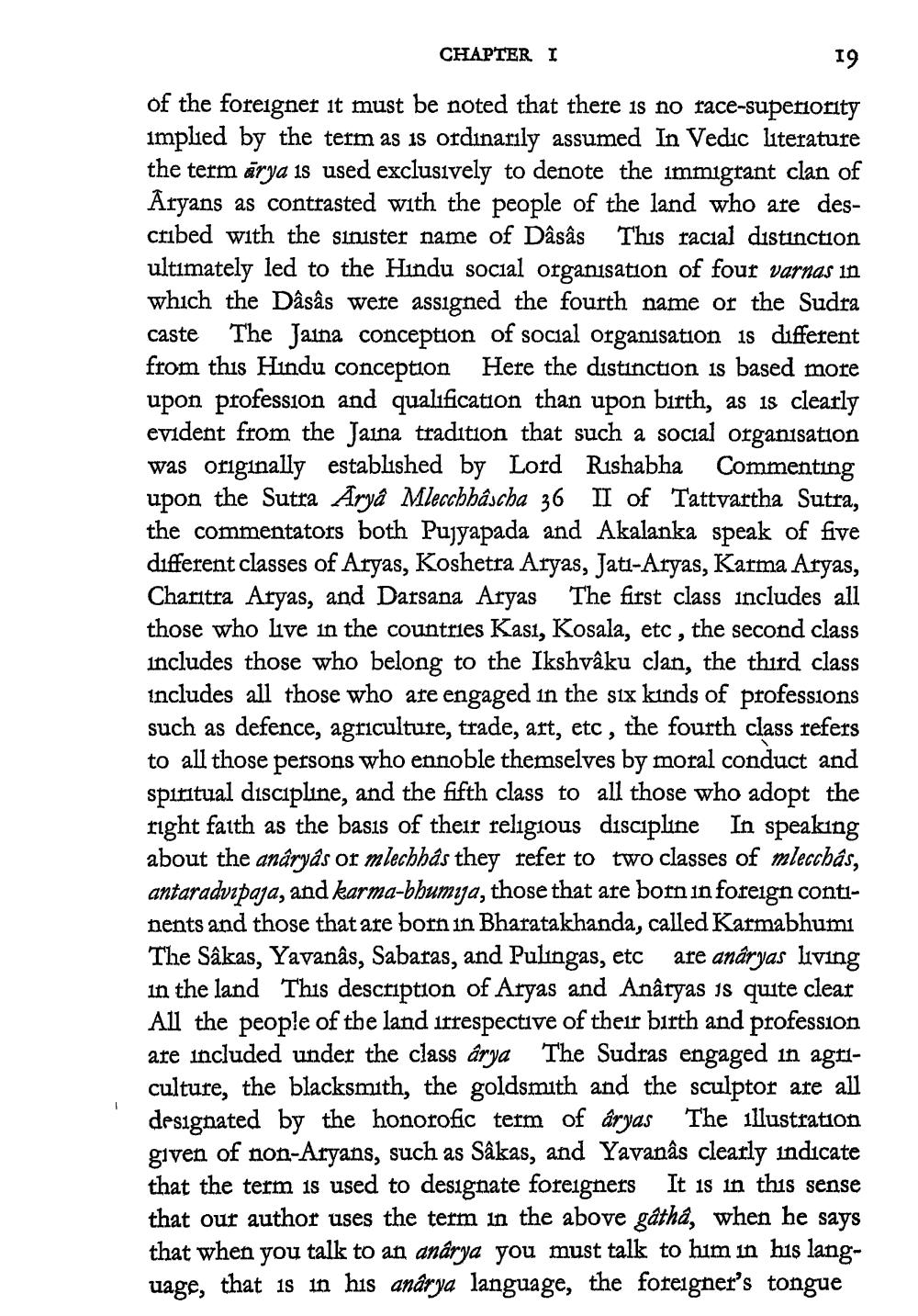________________
CHAPTER I
of the foreigner it must be noted that there is no race-superiority implied by the term as is ordinarily assumed In Vedic literature the term ārya is used exclusively to denote the immigrant clan of Aryans as contrasted with the people of the land who are described with the sinister name of Dâsâs This racial distinction ultimately led to the Hindu social organisation of four varnas in which the Dâsâs were assigned the fourth name or the Sudra caste The Jaina conception of social organisation is different from this Hindu conception Here the distinction is based more upon profession and qualification than upon birth, as is clearly evident from the Jaina tradition that such a social organisation was originally established by Lord Rishabha Commenting upon the Sutra Arya Mlecchhâscha 36 II of Tattvartha Sutra, the commentators both Pujyapada and Akalanka speak of five different classes of Aryas, Koshetra Aryas, Jati-Aryas, Karma Aryas, Charitra Aryas, and Darsana Aryas The first class includes all those who live in the countries Kası, Kosala, etc , the second class includes those who belong to the Ikshvâku clan, the third class includes all those who are engaged in the six kinds of professions such as defence, agriculture, trade, art, etc, the fourth class refers to all those persons who ennoble themselves by moral conduct and spiritual discipline, and the fifth class to all those who adopt the right faith as the basis of their religious discipline In speaking about the anáryás or mlechhâs they refer to two classes of mlecchás, antaradvipaja, and karma-bhumija, those that are born in foreign continents and those that are born in Bharatakhanda, called Karmabhumi The Sâkas, Yavanâs, Sabaras, and Pulingas, etc are anaryas living in the land This description of Aryas and Anâryas is quite clear All the people of the land irrespective of their birth and profession are included under the class arya The Sudras engaged in agriculture, the blacksmith, the goldsmith and the sculptor are all designated by the honorofic term of aryas The illustration given of non-Aryans, such as Sâkas, and Yavanâs clearly indicate that the term is used to designate foreigners It is in this sense that our author uses the term in the above gåtha, when he says that when you talk to an anarya you must talk to him in his language, that is in his anarya language, the foreigner's tongue




